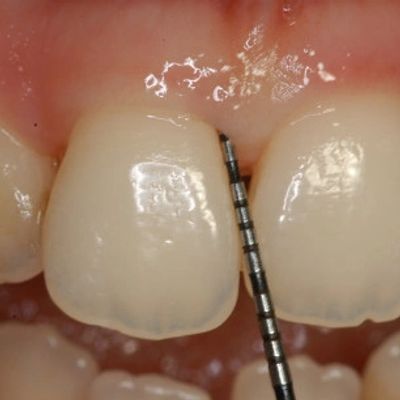Periodontal Therapy

What is Periodontium?
The Periodontium, generally referred to by our patients as "gums", is a complex structure that provides support to the teeth. It contains 4 different structures and all of them have a specific function in our mouth.
The external and visible ones inside the mouth are the Gums. The second is the Periodontal Ligament, which is the attachment fiber connecting the bone to the roots of our teeth. The third one is the Cementum, a thin layer covering the roots where the Periodontal Ligament is attached. And last but not least, is the Alveolar Bone, an extension of the Maxilar and Mandibular bone where the roots of our teeth are anchored.
Periodontal Examination
As a starting point of our Periodontal Therapy Session, we investigate the overall health of the supportive tissues around the teeth, the periodontium, by measuring the depth of the "sulcus gingivalis" or "gingival sulcus" - that is the moment when we "poke" the patient's gums. The gingival sulcus is a tiny space that we all have in between our teeth and gums which depth varying between 1 - 3 milimiters. When it is NOT bleeding, it is an indicator of health.
If your gums are bleeding but during a clinical examination, we find that the depth of the gingival sulcus is less than 3 millimeters we call this type of gum disease Gingivitis.
Gingivitis is a reversible stage of gum disease where only the gums are affected by the inflammatory process
Why do we do the Periodontal Examination?
"Healthy gums do not bleed" - That's one of the ultimate sign of health when we talk about gums.
As explained before, when you come for an examination we start "poking" your gums for a specific reason: Identify if there is an inflammatory process installed and/or if you have a periodontal pocket.
When we measure the sulcus and the depth is 4mm or more, we referred to as a periodontal pocket.
What is a Periodontal Pocket?
A periodontal pocket is a sign that the inflammation once established in your gums is now affecting the deepest component of your Periodontium, your bone, as a defense mechanism, our body removes bone from that specific area to protect your body from being exposed to the over 700 different types of bacterias present in our mouth.
In that stage, the diagnosis is now Periodontitis, which is an irreversible disease where the bone is lost, even after periodontal treatment, with the end of the inflammation and complete gums healing, the bone will NOT grow back.
What is Periodontal Therapy?
Periodontal therapy is a series of minimally invasive techniques applied to control biofilm and remove calculus which are the main causes of gum disease (Gingivitis or Periodontitis) in order to reestablish health in the Periodontium.
The most common types of treatments are scaling with manual (the "old school" or "scraping instrument") or powered instruments (Ultrasonic Scalers), AirFlow and PerioFlow therapy (minimally invasive), and Polishing with prophylactic paste and brush or rubber cup.
Who needs Periodontal Therapy?
The first and most important sign that indicates the need of Periodontal Therapy is bleeding, wheter while brushing, or flossing, or even eating but we must raise a flag for more advanced stages when bleeding happens spontaneously.
Secondarily we consider clinical signes like changes in colour of the gums (redness, purple, or even white and black/brown marks) and teeth (most common are yellowness and light/dark brown), swelling gums, roughness (when you feel your teeth not smooth with your tongue), bad breath are some examples.
If you noticed any of those changes in your gums or teeth please look for professional assistance
We are currently working at Twoth Facial and Dental Aesthetics in St John's Wood area in London.
If you have any questions don't hesitate to contact us
Kind Regards,
Carlos Ribeiro - Dental Hygienist and Therapist
Cookie Policy
This website uses cookies. By continuing to use this site, you accept our use of cookies. Privacy Policy
